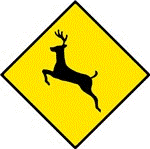United States Department of Agriculture, National Wildlife Research Center: Symposia

Human Conflicts with Wildlife: 2002 Symposium
Date of this Version
August 2000
Abstract
Management of urban Canada geese impacts can be assisted by the use of economic analyses of both the problem and the proposed solution. Management of a species that is both geographically mobile and stationary, protected by the Migratory Bird Act of 1918, and loved by much of the public while posing a significant risk of damage to both private and public property is a difficult task. The issue is further complicated by the scope and scale of urban goose impacts. While the presence of urban Canada geese results in both positive and negative impacts, this paper will focus primarily on the management problems involving overabundance and concentrated populations. The many negative impacts caused by Canada geese may occur at a “lawn” level, or be aggregated into a “community” level. Management actions that solely focus on the “lawn” level may shift the problem to other parts of the community. Economic analysis provides a venue for management strategies, either individually or in aggregate, to be evaluated in a common time frame that accounts for their real costs and resulting benefits. Three economic techniques can be used to evaluate management strategies at any geographic level: economic feasibility, economic efficiency, and cost-effectiveness analysis.

